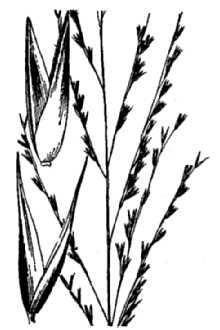Curtis' Dropseed
Scientific Name: Sporobolus curtissii (Vasey ex Beal) Small ex Scribn.

| General Information | |
|---|---|
| Usda Symbol | SPCU |
| Group | Monocot |
| Life Cycle | Perennial |
| Growth Habits | Graminoid |
| Native Locations | SPCU |
Plant Guide
Use soil moisture sensors to measure the soil moisture of Curtis' Dropseed.
Fact Sheet
Alternate Names
Curtis dropseed
Uses
Curtis’ dropseed is grazed readily by cattle during the winter and spring.
Status
Please consult the PLANTS Web site and your State Department of Natural Resources for this plant’s current status, such as, state noxious status, and wetland indicator values.
Description
Grass Family (Poaceae). Curtis’ dropseed is a native, cool-season, perennial bunch grass. The height ranged from 1 to 2 feet. The leaf blade is mostly basal, flat, narrow, 6 to 10 inches long, and the upper surface near the base is hairy. The leaf sheath is shorter than the internodes and the basal sheaths are hairy at the throat. The seedhead has an open panicle 6 to 8 inches long and straw-colored glumes that remain after the seeds disseminate. From Hitchcock (1950) @ plants.usda.gov Distribution: For current distribution, please consult the Plant Profile page for this species on the PLANTS Web site.
Management
For better grazing conditions, if vegetative growth accumulates after winter deferments of 2 or more years, ranges should be burned in late winter and grazing deferred for 3 to 4 weeks or until fall, , Use soil moisture sensors to measure the soil moisture of Curtis' Dropseed.
Establishment
This species makes considerable growth during the winter. It produces seeds in early May and June. Sometimes it remains green during the summer and early fall. A few seed stalks are produced from a single plant. It is primarily adapted to moist sandy soils. Cultivars, Improved and Selected Materials (and area of origin) Please contact your local NRCS Field Office.
